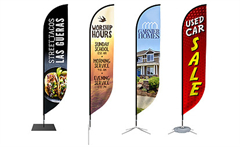Creating brochures for different demographics involves tailoring your design, content, and messaging to effectively engage and resonate with specific target audiences. Here’s a step-by-step approach to creating brochures that cater to various demographics:
- Segmentation and Research: Identify the different demographics you want to target, such as age groups, genders, interests, and locations. Conduct thorough research to understand their preferences, needs, pain points, and communication styles.
- Design Customization: Adapt your brochure’s design elements to match each demographic’s preferences. Consider color schemes, imagery, fonts, and layout styles that resonate with their tastes.
- Messaging Alignment: Craft messaging that directly addresses the unique needs and interests of each demographic. Speak their language and use terms they can relate to.
- Imagery Selection: Choose images that reflect the demographic’s lifestyle, interests, and aspirations. Show people, situations, and scenarios that they can easily identify with.
- Content Personalization: Tailor your content to highlight how your product or service specifically benefits each demographic. Showcase solutions to their challenges or fulfill their desires.
- Tone and Voice: Adjust the tone and voice of your copy to match the communication style of each demographic. Use a formal tone for professional audiences and a casual tone for younger demographics, for instance.
- Emotion Connection: Create an emotional connection by addressing values and feelings that resonate with each demographic. Emphasize how your offering aligns with their beliefs.
- Call to Action Relevance: Customize your calls to action (CTAs) to align with the desired actions of each demographic. Use CTAs that are relevant and compelling to each group.
- Highlight Testimonials: Showcase testimonials from customers within each demographic. This helps build trust and demonstrates the relevance of your offering.
- Localization: If targeting different geographic regions, consider localizing aspects of your brochure, such as currency, units of measurement, and cultural references.
- A/B Testing: Test different versions of your brochure with each demographic to see which design elements, content, and messaging resonate the most.
- Consistency Across Touchpoints: Ensure consistency in your branding across all marketing materials and touchpoints. This helps build a strong and recognizable brand image.
- Feedback and Iteration: Gather feedback from representatives or members of each demographic to ensure accuracy and effectiveness. Use this feedback to refine your brochures.
- Digital Versatility: Keep in mind the digital distribution channels for each demographic. Some might prefer email, while others might use social media or websites.
- Accessibility Considerations: Ensure your brochures are accessible to all demographics, including those with disabilities. Use readable fonts, appropriate color contrasts, and descriptive alt text for images.
- Tracking and Analysis: Monitor the performance of each demographic-specific brochure. Analyze engagement, conversions, and feedback to continuously improve your approach.
Remember, effective targeting involves understanding your audience’s unique characteristics and tailoring your brochures to create a personalized experience. By addressing their specific needs and preferences, you’ll increase the chances of connecting with them and achieving your marketing goals.


























